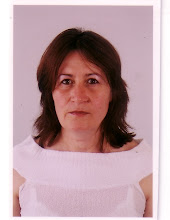


Dear previous 'Catch a Star' participants,
We are writing to you to let you know that the new 'Catch a Star
2008' competition is now open for entries. You can find out more on
the web at:
http://www.eso.org/catchastar/cas2008/
Please feel free to inform other teachers and students about this
competition:
Catch a Star 2008!
School students: imagine winning a trip to visit a world-class
astronomical observatory in Chile's stunning Atacama Desert!
ESO and the European Association for Astronomy Education have just
launched the 2008 edition of 'Catch a Star', their international
astronomy competition for school students. Now in its sixth year, the
competition offers students the chance to win a once-in-a-lifetime
trip to ESO's flagship observatory in Chile, as well as many other
prizes.
'Catch a Star' gets students thinking about the wonders of the
Universe and the science of astronomy, with a chance of winning great
prizes. It's easy to take part, whether by writing about astronomy or
creating astronomically inspired artwork.
The competition includes separate categories - 'Catch a Star
Researchers' and 'Catch a Star Adventurers' - to ensure that every
student, whatever their level, has the chance to enter and win
exciting prizes. In teams, students investigate an astronomical topic
of their choice and write a report about it. An important part of the
project for 'Catch a Star Researchers' is to think about how ESO's
telescopes such as the Very Large Telescope (VLT) or future telescopes
such as the Atacama Large Millimeter/submillimeter Array (ALMA) and
the European Extremely Large Telescope (E-ELT) could contribute to
investigations of the topic. Students may also include practical
activities such as observations or experiments.
For the artistically minded, 'Catch a Star' also offers an artwork
competition, 'Catch a Star Artists'.
Last year, hundreds of students from across Europe and beyond took
part in 'Catch a Star', submitting astronomical projects and artwork.
As well as the top prize - a trip to ESO's Very Large Telescope in
Chile - visits to observatories in Austria and Spain, and many other
prizes, can also be won. 'Catch a Star Researchers' winners will be
chosen by an international jury, and 'Catch a Star Adventurers' will
be awarded further prizes by lottery. Entries for 'Catch a Star
Artists' will be displayed on the web and winners chosen with the help
of a public online vote.
All entrants will receive a 'Catch a Star' certificate of
participation.
Detailed entry information and rules can be found at:
http://www.eso.org/catchastar/cas2008/
Printable flyers about the competition are available as PDF files at:
http://www.eso.org/catchastar/cas2008/flyers/
Good luck!
The ESO Catch a Star team.






